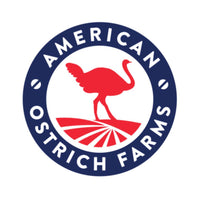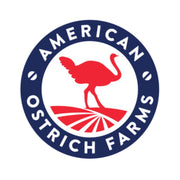Beef is taking a big toll on the environment, and if we don’t make a change soon, we are in for a challenging future.
According to a recent post from The New York Times, in order for us to begin weaning off our reliance on beef, we will need to replace the many cuts of beef that Americans love with sustainable swaps.
In swoops ostrich meat. Ostrich meat is in fact red meat and a healthier option at that. While leaner than chicken, ostrich meat is reported to taste just like high-quality cuts of lean beef.
THE HARMFUL EFFECTS OF THE BEEF AND LIVESTOCK INDUSTRY
As the beef industry continues to grow and expand, the harmful effects follow closely behind.
18 percent of total greenhouse gas emissions are produced by the livestock industry, mainly the beef industry. This is more than all transportation emissions added together.
Production of livestock accounts for 30% of land use globally, and 70% of all agricultural land.
Raising one pound of beef requires nearly 2000 gallons of water and 30 pounds of grain.
All of this contributes heavily to environmental issues such as global climate change, freshwater pollution, deforestation, and more.
HOW IS OSTRICH MEAT HELPING THE ENVIRONMENT?
With a hurting environment and growing health concerns, Ostrich meat looks to be the answer. It is becoming overwhelmingly clear that we need to cut way back on beef production and consumption, and Ostrich meat is showing to be an eco-friendly food option.
Pound for pound, this flightless African bird takes up less land, consumes less food and water, and produces less waste and methane than any other red meat.
HERE ARE THE FACTS
- Ostriches use 1/3 of the freshwater that beef requires
- Roughly three times more feed is required to raise a pound of beef than a pound of ostrich meat
- They use 1/50 of the land that grass-fed beef requires
- They emit significantly less methane than beef, pork, or sheep
- They contribute 1/10 of the greenhouse gases per pound than that produced of beef
With all factors considered, ostrich meat is the most sustainable red meat option available.
HOW OSTRICH MEAT IS HELPING THE FOOD INDUSTRY
As populations continue to grow, more food, specifically red meat, is in demand. In 2017 alone, 26.3 billion pounds of beef were processed.
Given the statistics presented above, this massive amount of beef production has a devastating effect on the environment.
Swapping ostrich meat for beef will allow for a greater yield at a much lower cost as ostriches require much less land, food, and water.
HERE ARE THE FACTS
- Ostriches produce a minimum of 40 chicks a year and are ready for market within 400 days of conception
- Ostriches may also produce eggs for up to 30 years
- Cows give birth only once a year and are not ready for market until 650 days after conception
- 52% of an Ostriches bodyweight is yielded for consumption compared to 41% of a cattle's
Additionally, ostrich eggs are an available food source. Their eggs weigh in at around four pounds each and are equivalent to roughly two dozen chicken eggs.
IS OSTRICH MEAT?
Ostrich meat is not only a sustainable swap for the environment, it is much leaner than other red meat options.
Ostrich meat is roughly 97% fat-free, low in cholesterol, high in iron, and a great source of protein.
Some lean cuts of beef have 4 to 5 grams of total fat, while fattier beef may have 6 to 11 grams. Comparatively, the same size cuts of ostrich meat will have about 2 to 3 grams of total fat.
Arguably the most important fact is that hormones and steroids are not used in most farm-raised ostriches.This allows much cleaner and healthier meat options.
HOW IT TASTES
Ostrich meat is not only a healthier swap for other red meats, it is a delicious option as well. Some assume ostrich meat tastes "gamey," but ostrich has a balanced flavor which is perfect for meat-lovers and picky eaters alike.
Properly raised ostrich tastes like premium prime beef or filet mignon. It can be used for burgers, steaks, jerky, stews, and many other preparations.
Ostrich meat is a one-to-one replacement for beef so it allows for a seamless swap in a number of classic recipes.
OSTRICH OIL FOR COSMETICS
What’s more is ostrich oil, souced from rendered ostrich fat, can be used in cosmetics. This offers a sustainable swap for harmful chemical-filled alternatives. It also shows to be more effective than emu oil as an all-natural moisturizer
Ostrich oil offers numerous benefits including:
- Hydrates skin, increases elasticity, and acts as an anti-aging agent
- Helps wounds heal faster
- Reduces scars and stretch-marks
- Promotes scalp, hair, and joint health
Ostrich oil has a high concentration of omega fatty acids, allowing it to deliver nutrients deep into the skin. This makes ostrich oil a very useful moisturizer for people who suffer from skin problems such as acne, eczema, and rosacea.
ARE YOU READY FOR SUSTAINABLE SWAPS TO RED MEAT?
As you have seen thus far, red meat is a large contributor to environmental destruction. If you're looking for sustainable swaps, you should try ostrich meat.
While delicious, tasting like and resembling the texture of a filet mignon, ostrich meat is also an eco-friendly food source.
With a growing interest in ostrich meat, we will hopefully reduce beef consumption and begin to reverse the negative environmental impacts it has produced.
The next step is to try our lean meat today!






